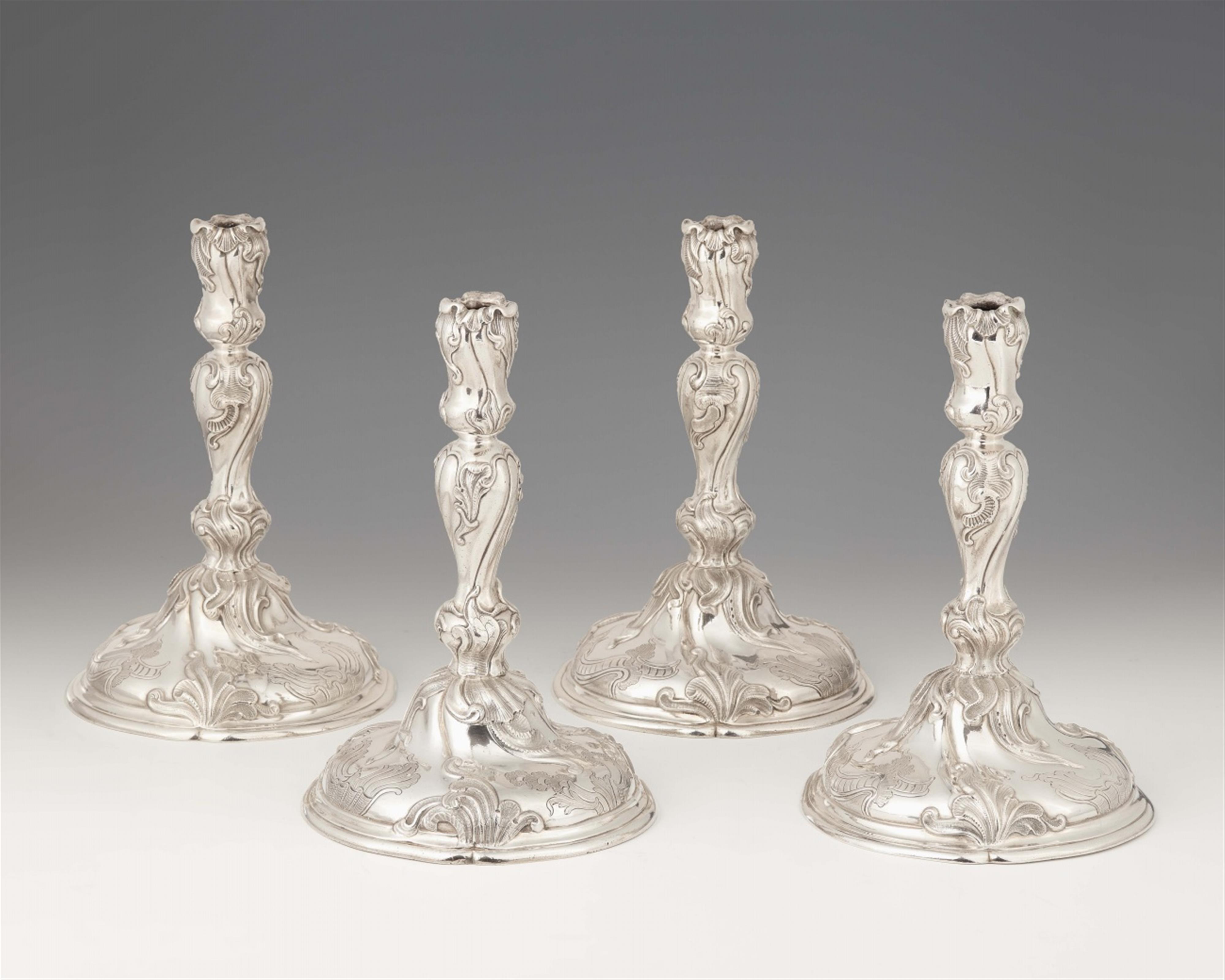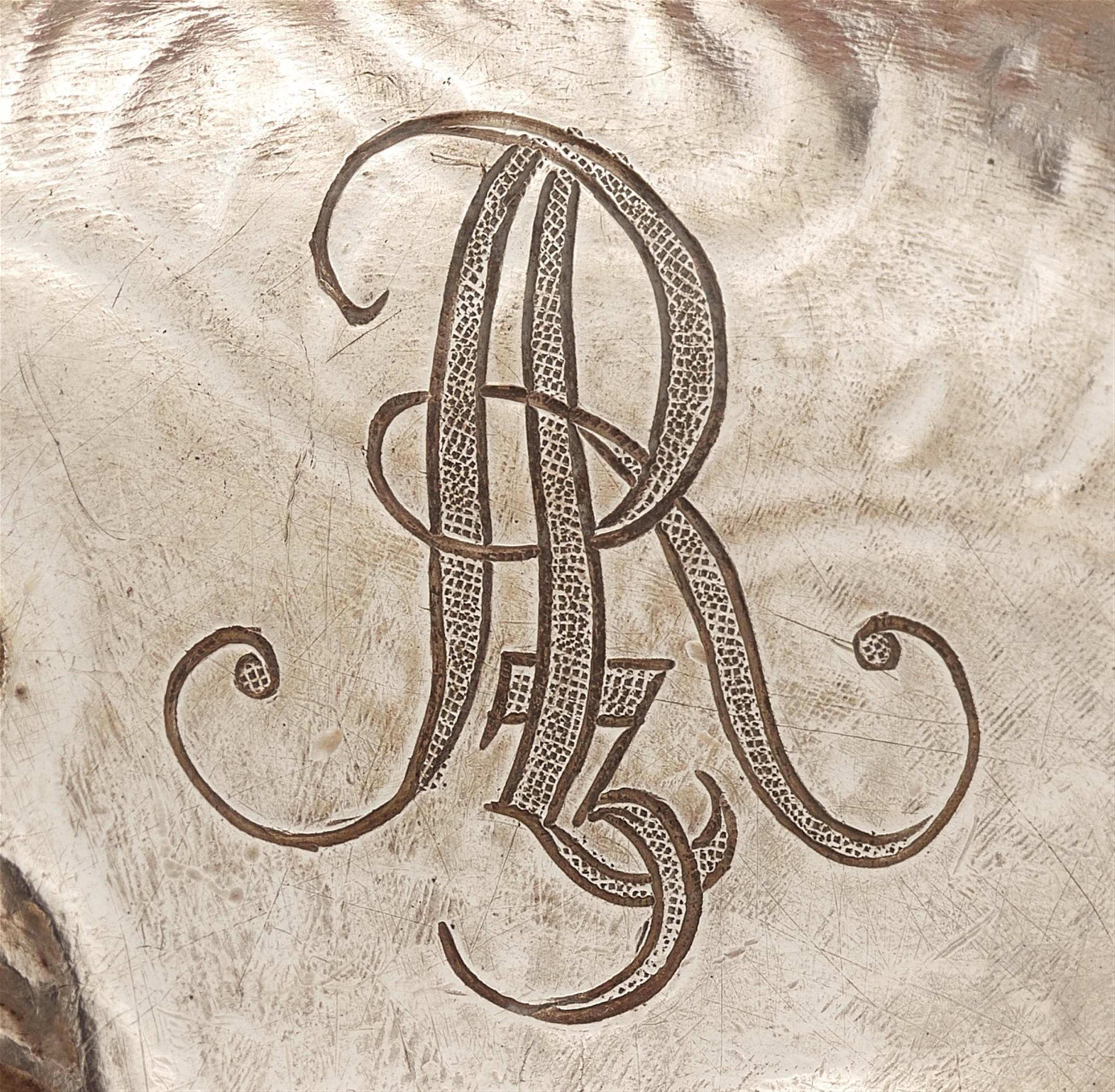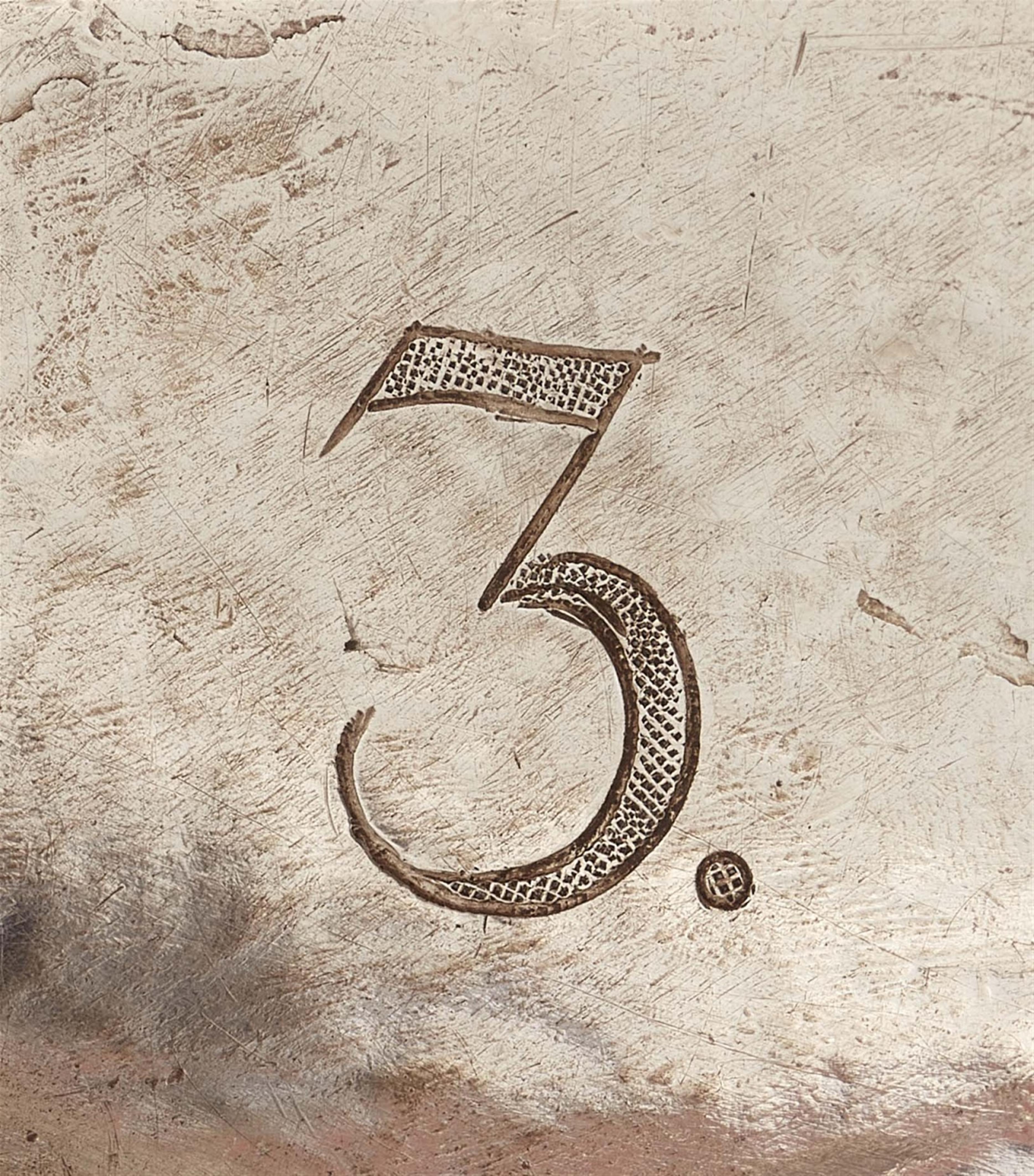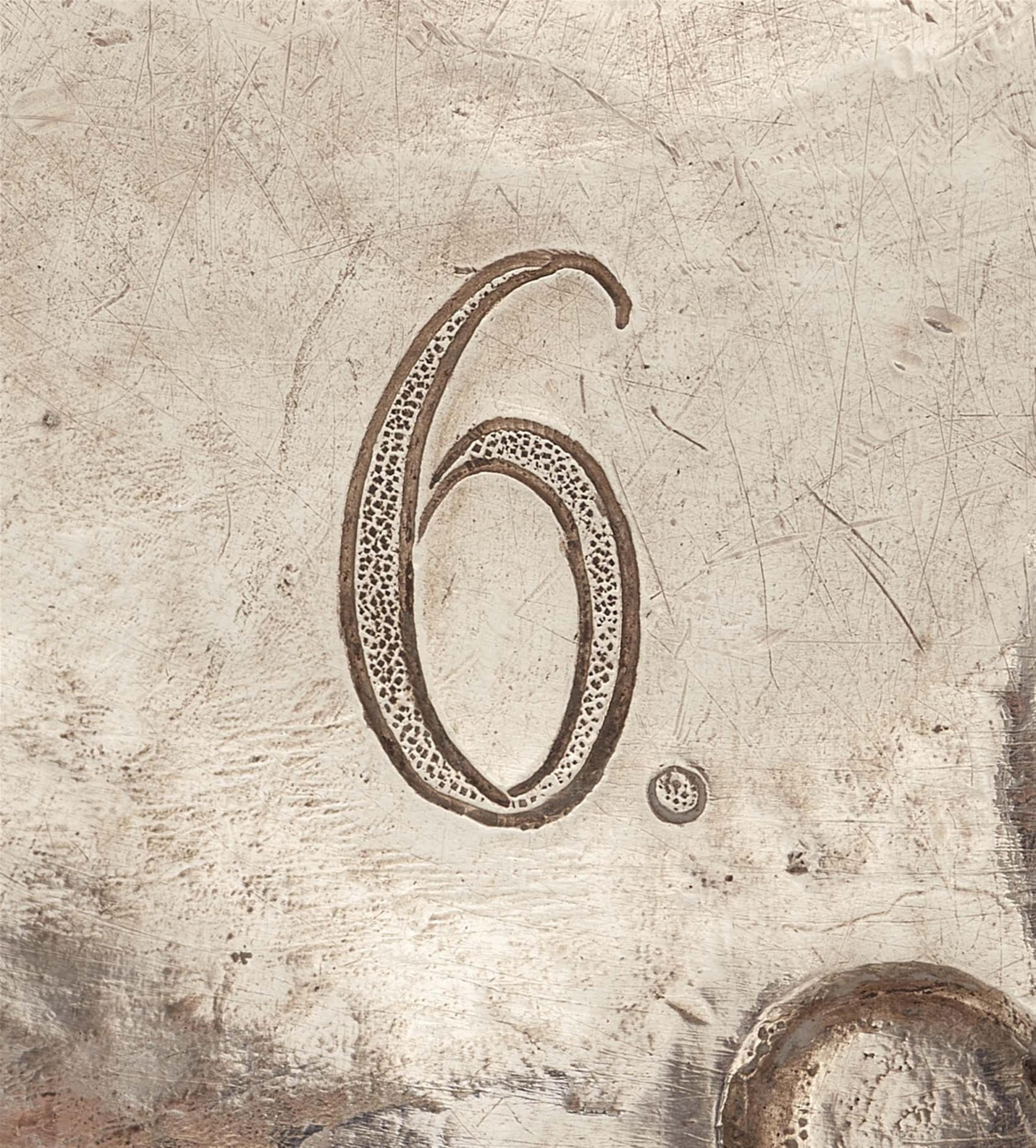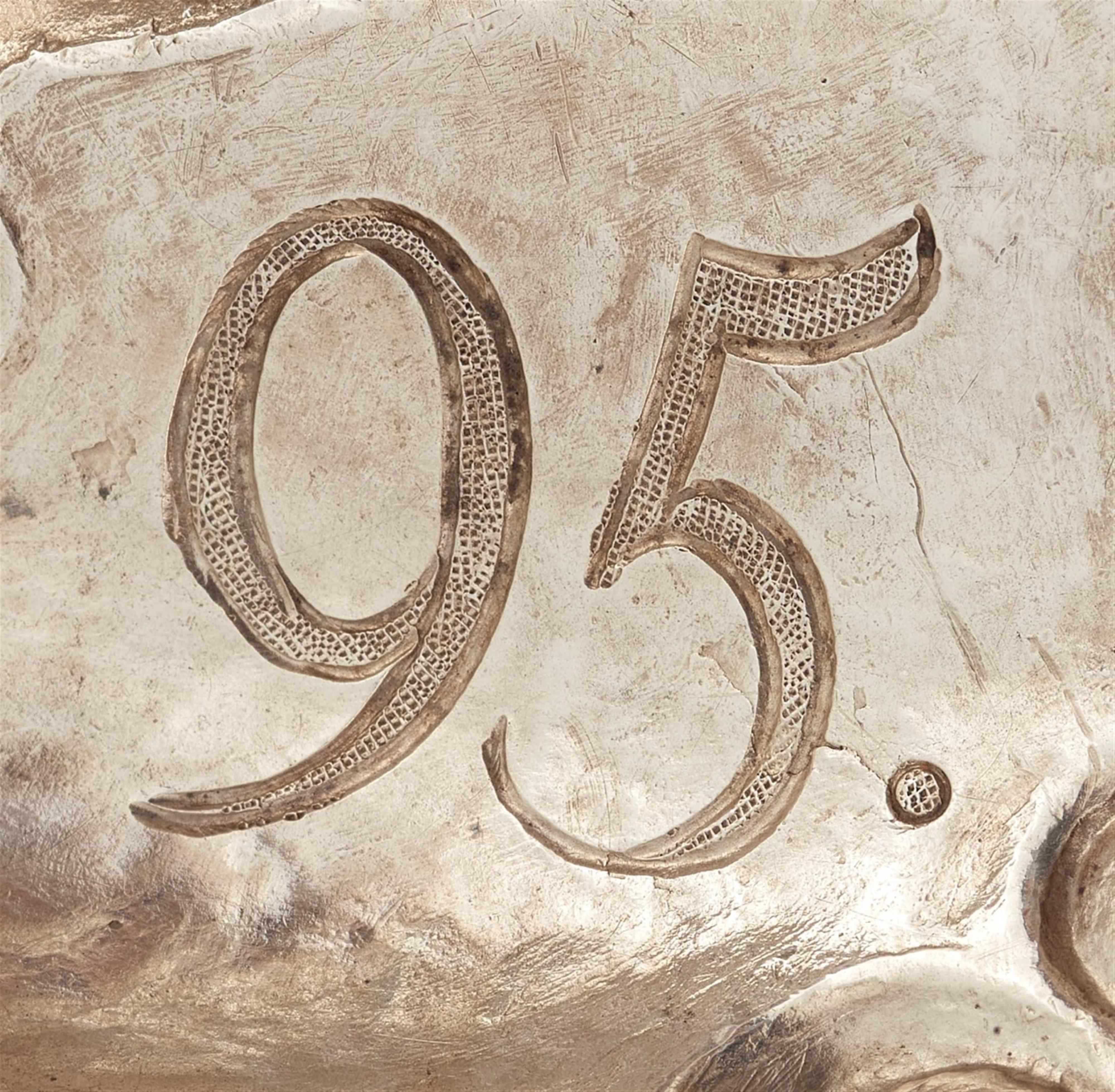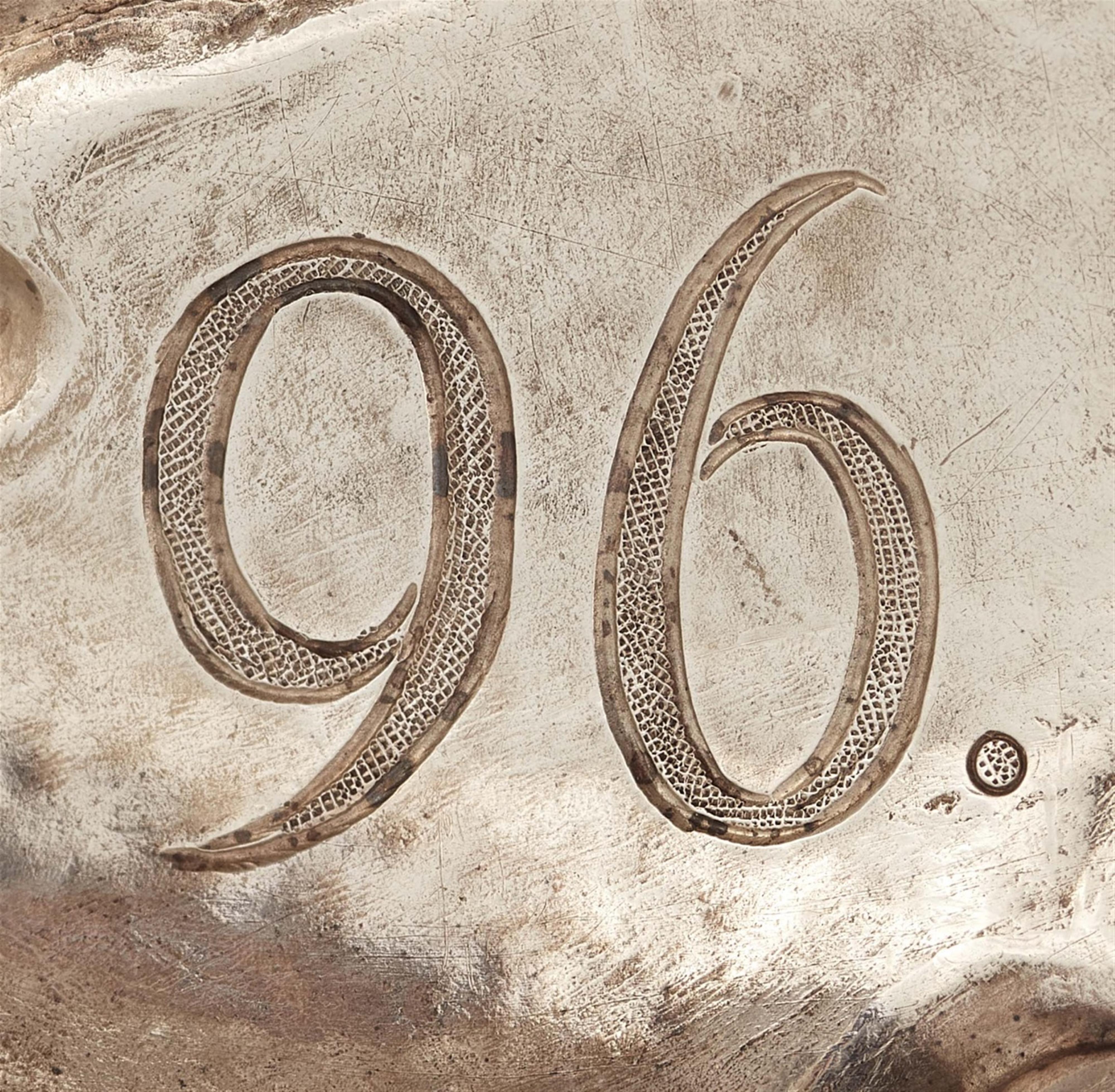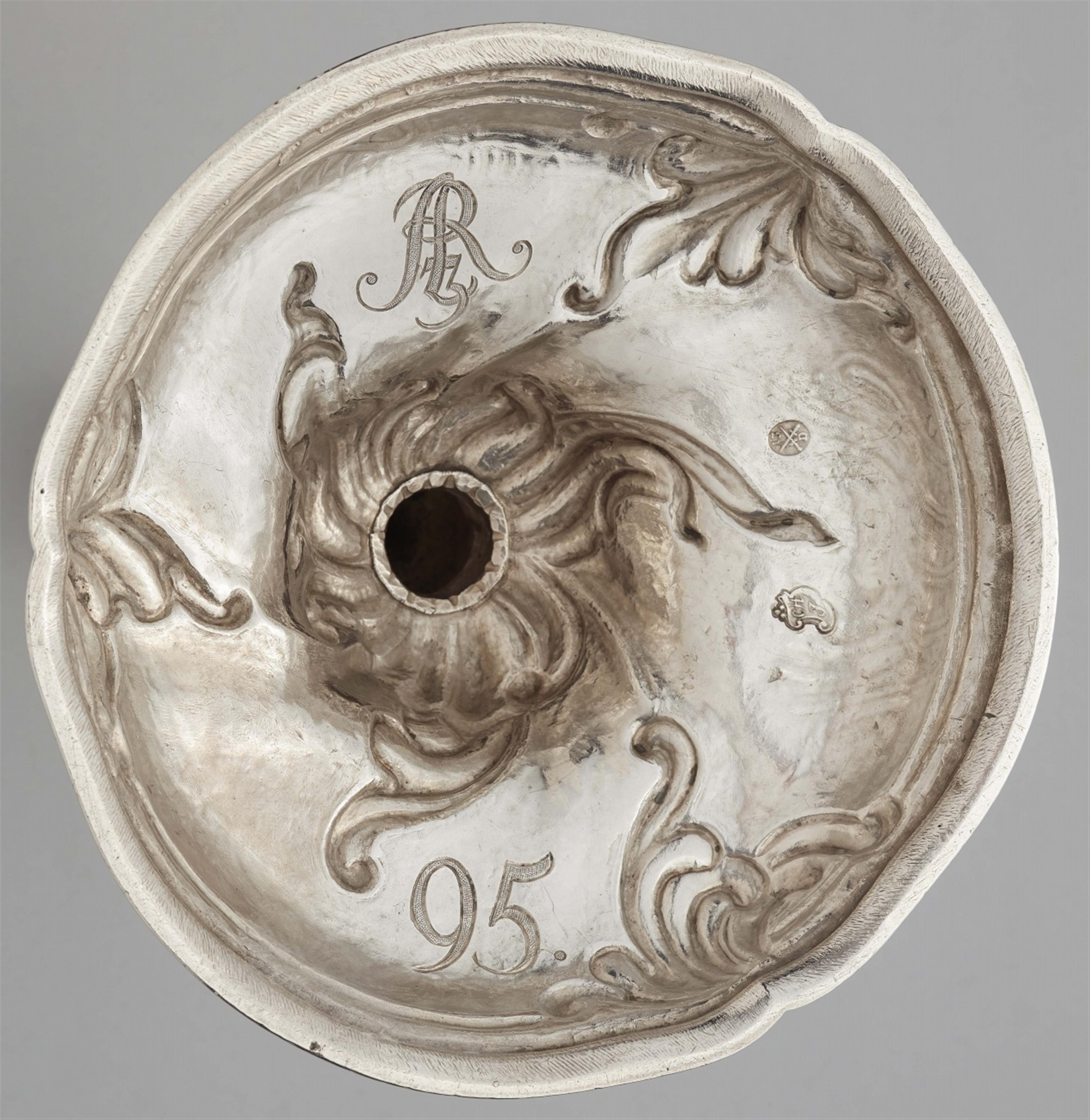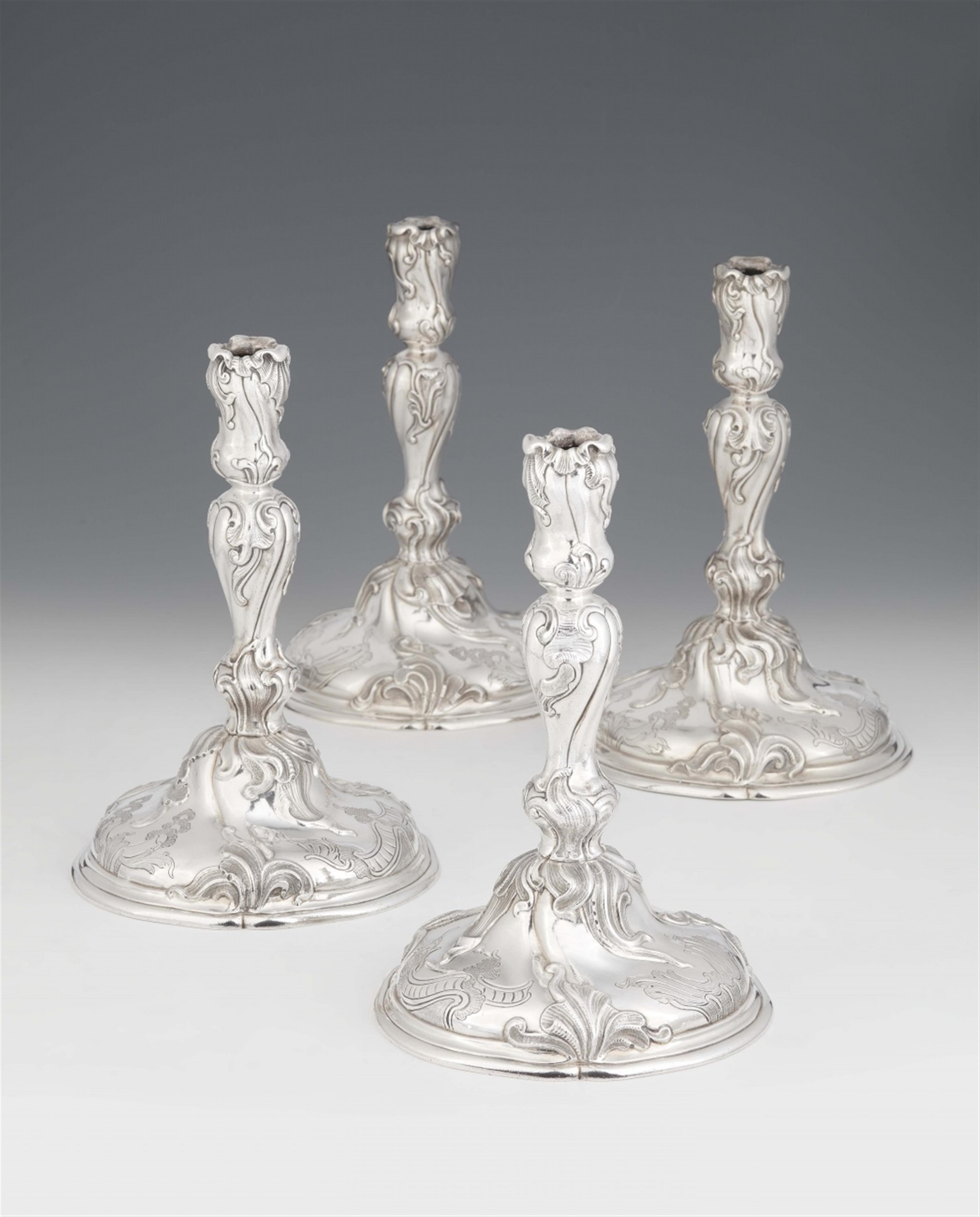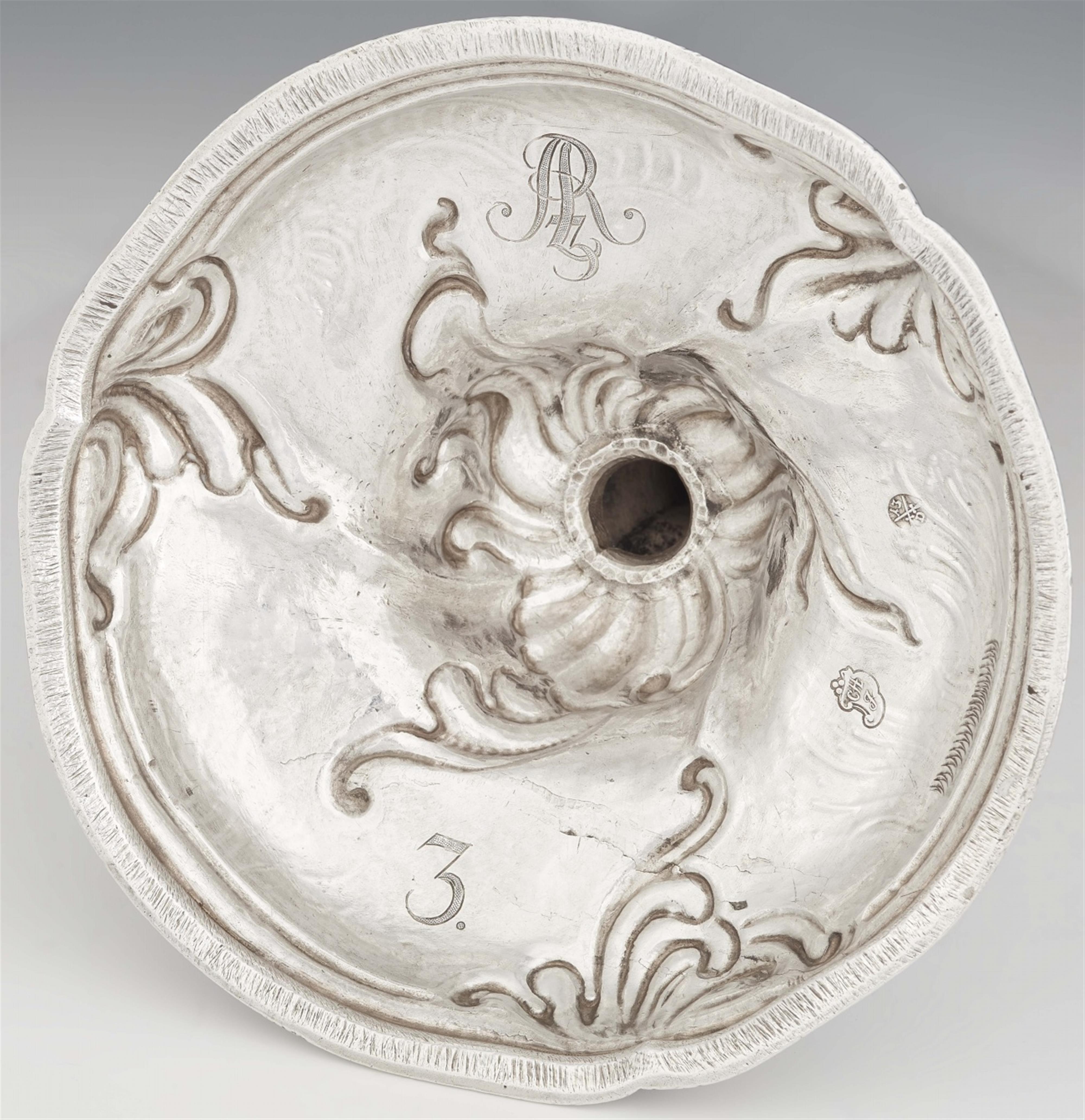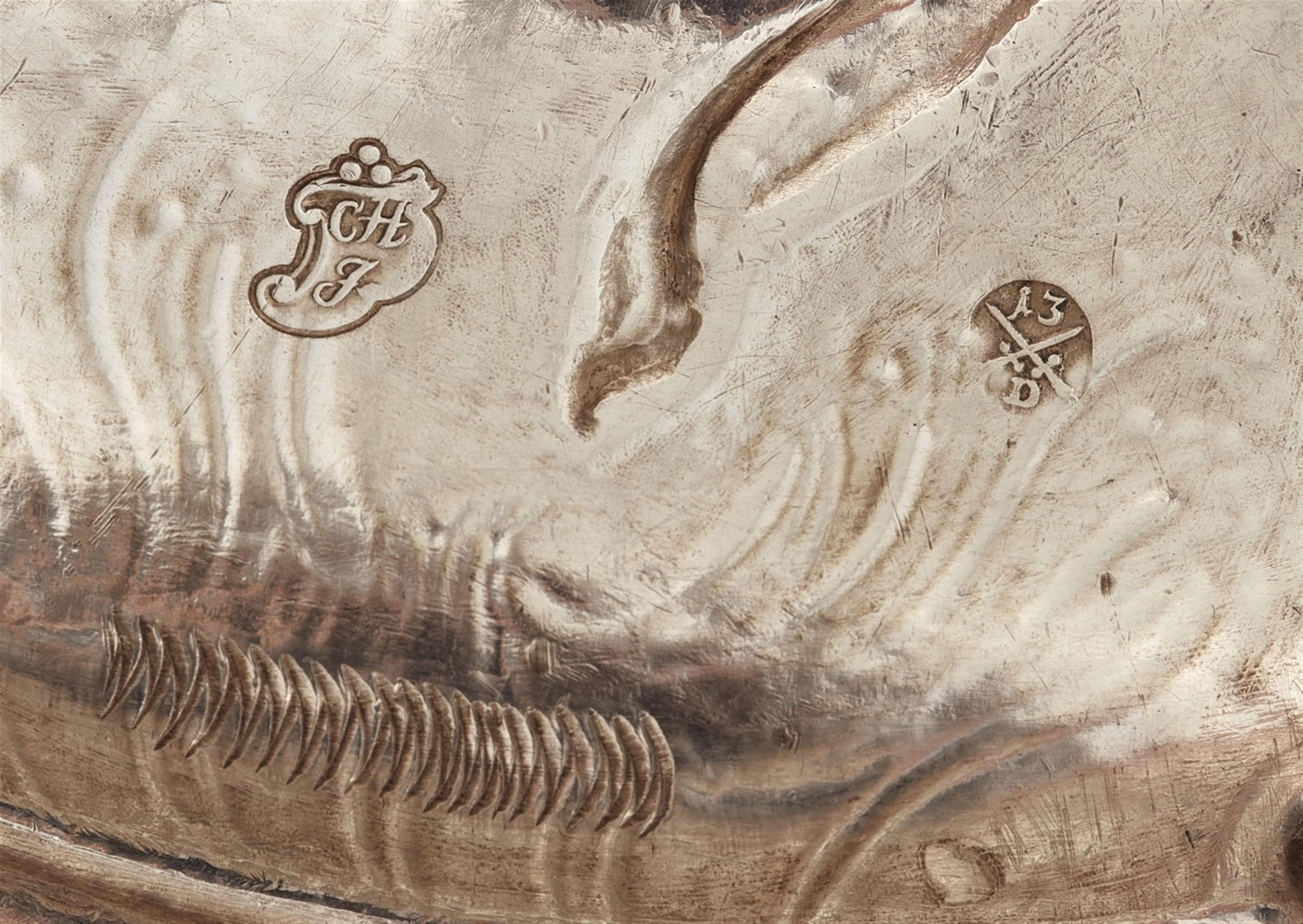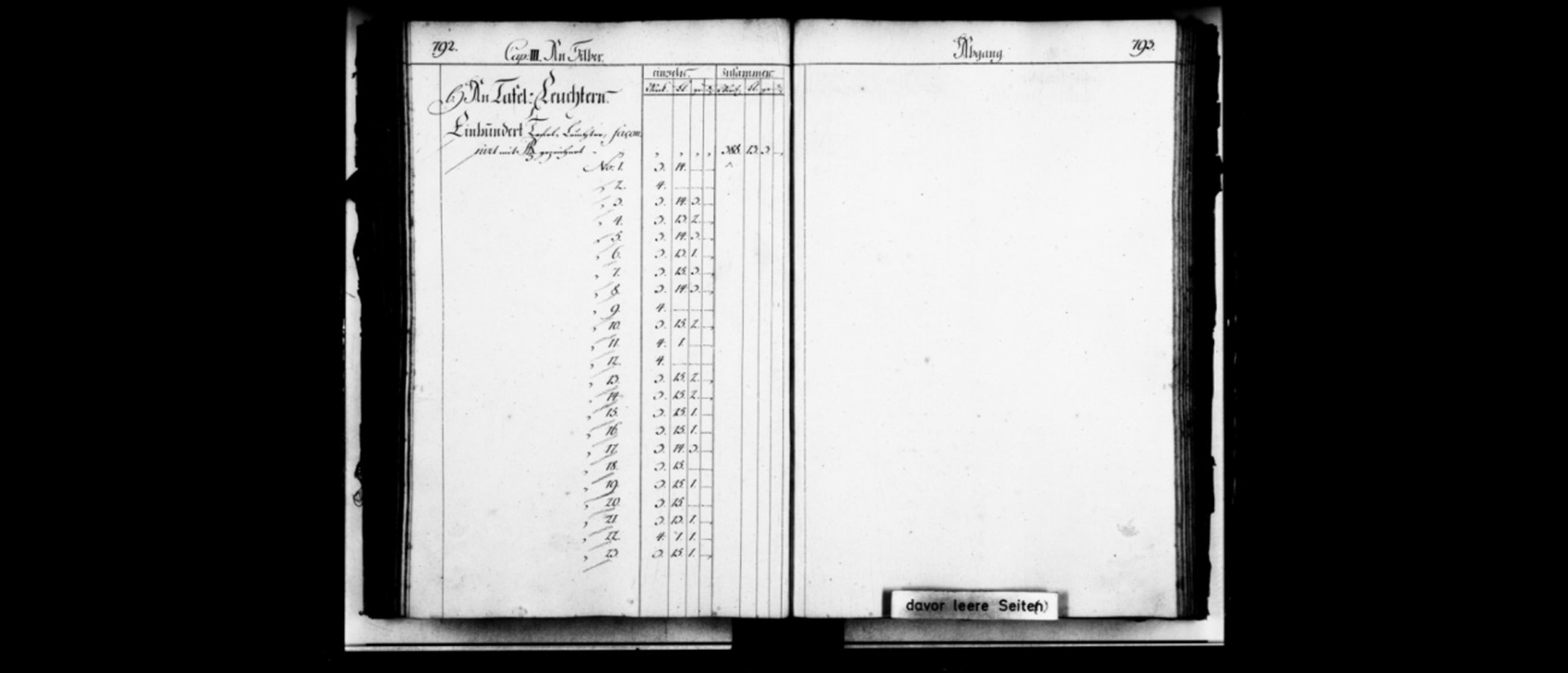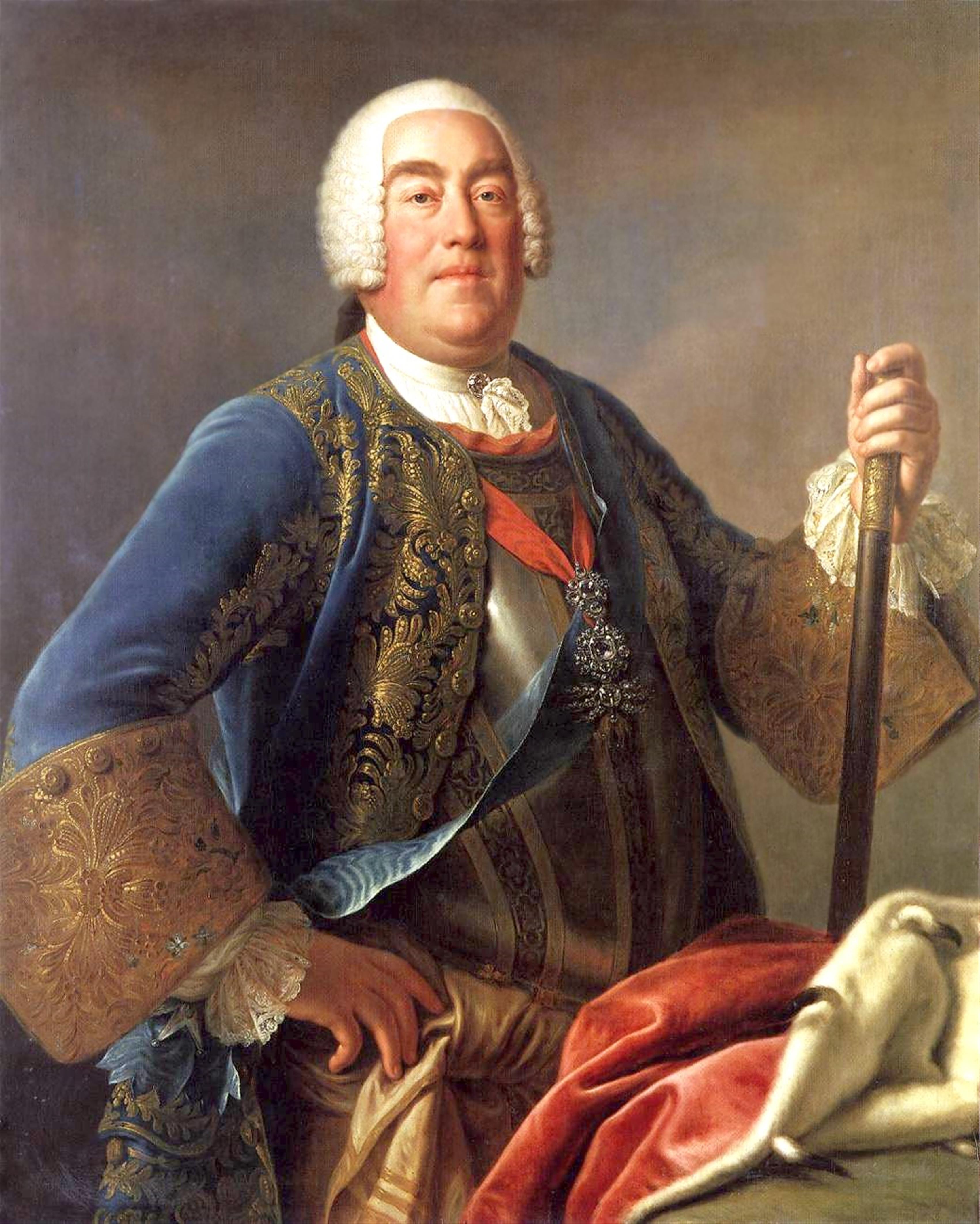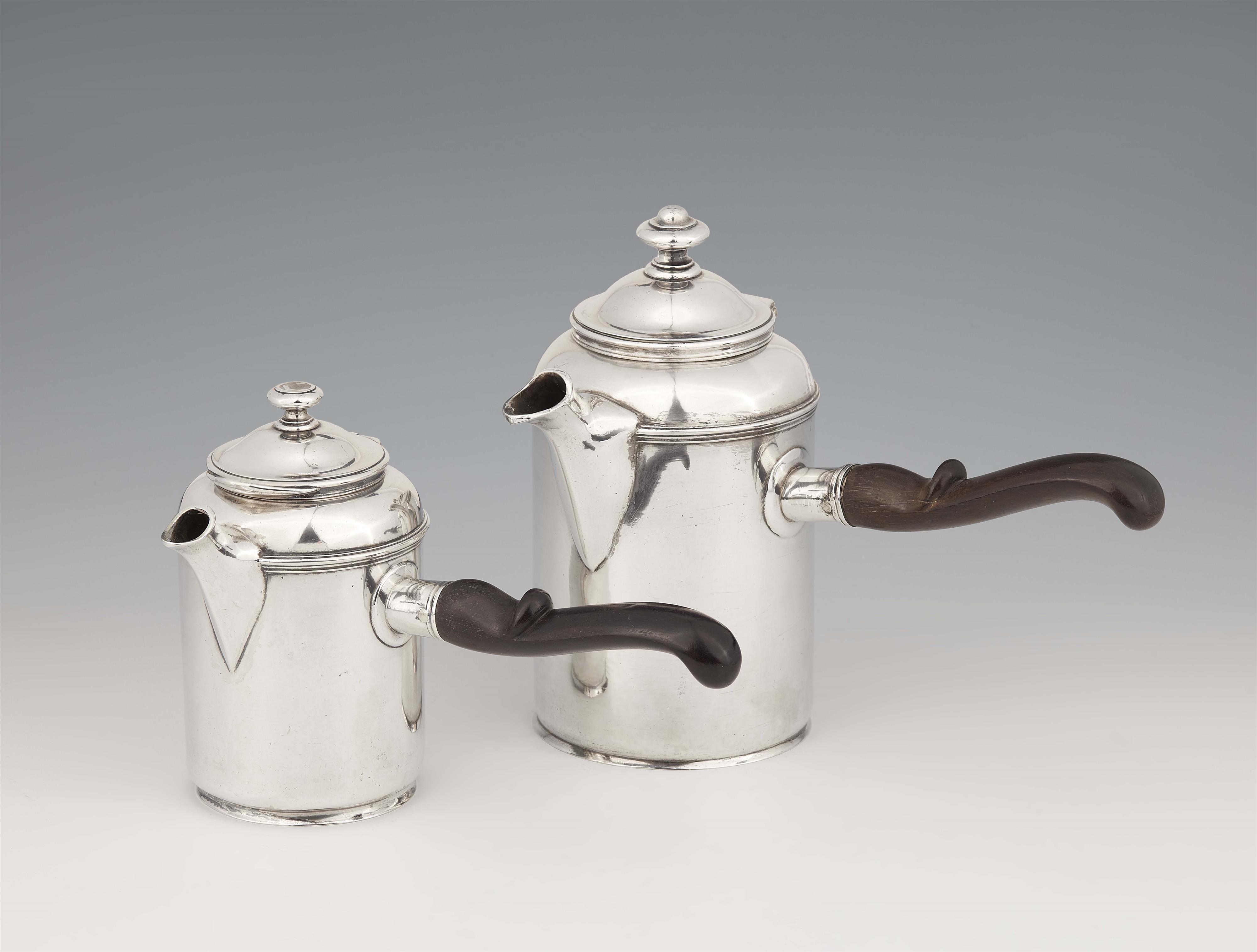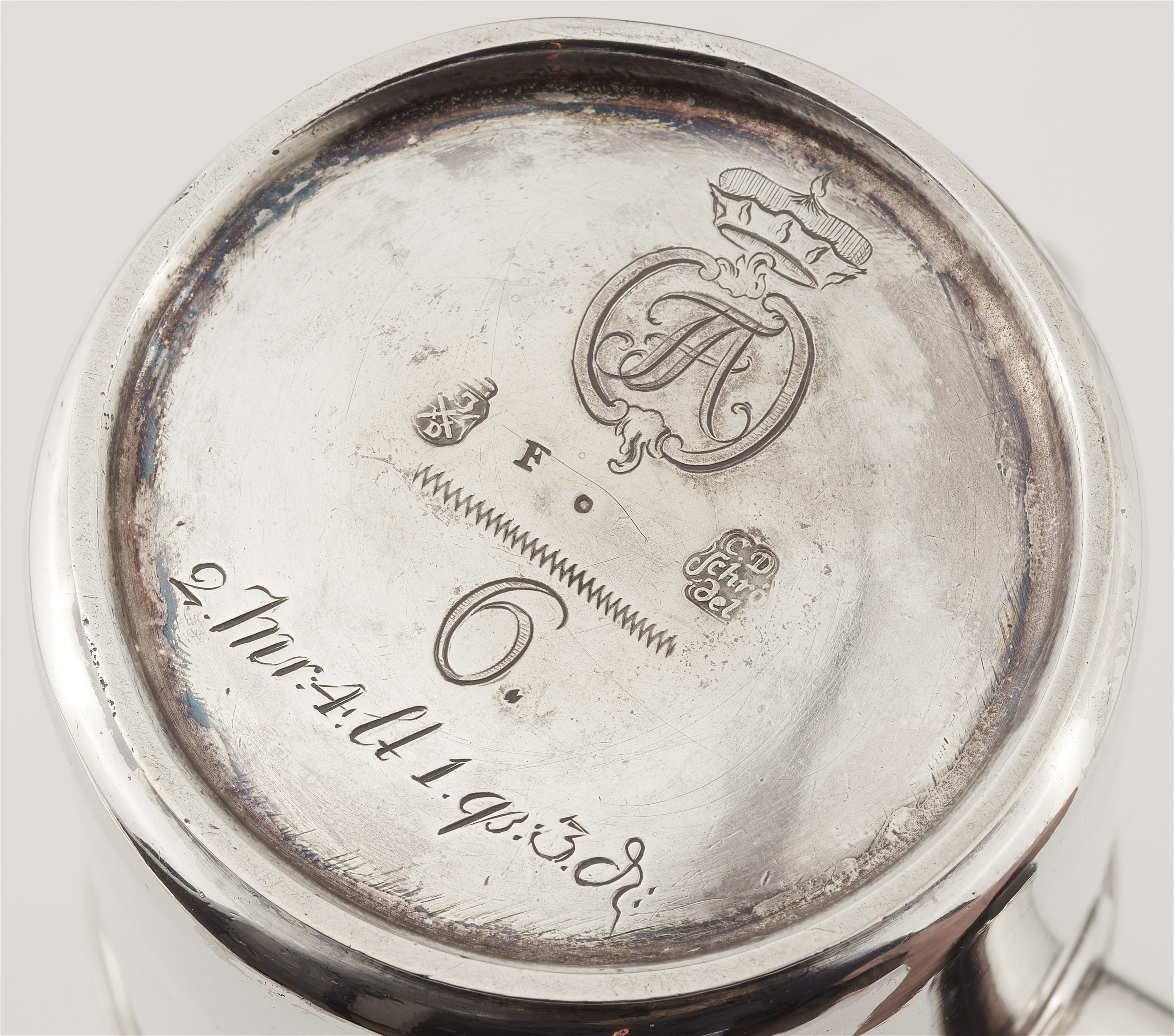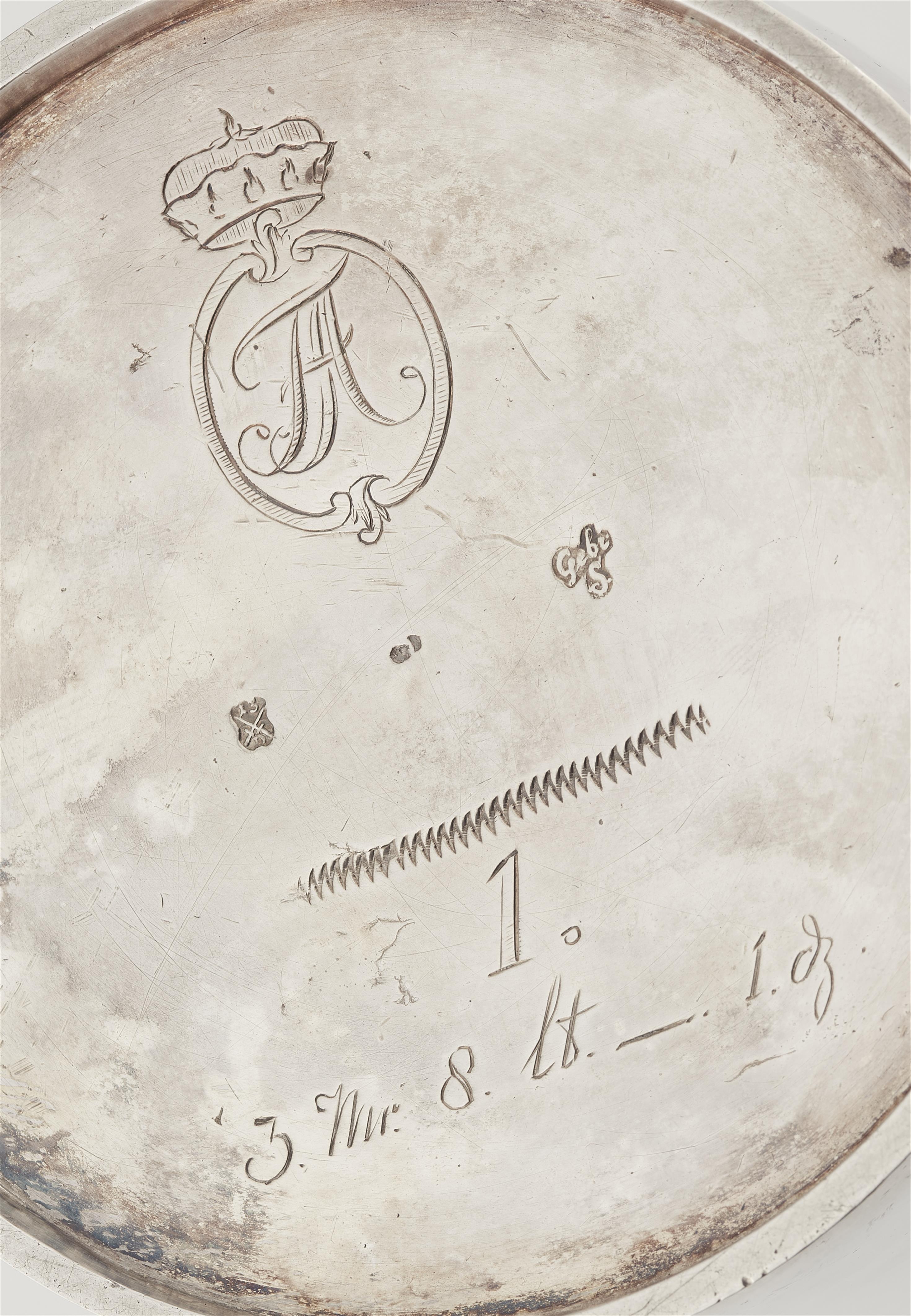A set of four Dresden silver candlesticks made for Prince Elector August II of Saxony
Silber. Round, moulded bases embossed with shellwork and acanthus amid twist fluting, the baluster-form shafts with corresponding decor supporting vase shaped nozzles. The undersides engraved with conjoined AR3 monograms and inventory nos. 3, 6, 95, 96. H 23 cm, total weight 3,544 g.
Marks of Christian Heinrich Ingermann, circa 1745.
After the death of his father, Augustus the Strong, in Warsaw in 1733, Frederick Augustus II. (1696 - 1763) became Prince Elector of Saxony - and as August III, the last Wettin in personal union, also King of Poland. In the same year he ordered a revision of the richly filled Court Silver Collection, which, in addition to two gilded dinner services, contained at least six different services made of white silver (cf. Arnold p. 31). Some of the earlier services were melted down by Frederick Augustus II, others were apparently supplemented and provided with the engraved monogram A R 3 for Augustus Rex III. The present lot belongs to an extensive set of a total of 100 individual candlesticks, which was probably commissioned around 1745 to supplement one of the white silver services for the daily use of the royal family.
The Ingermann family of goldsmiths from Dresden played a significant role in the redesign of the court silver: Paul Ingermann (c. 1670 - 1752) held the title of court silverworker under Augustus the Strong as early as 1728. Among his sons, Christian Heinrich (c. 1713 - 1778) apparently played a prominent role. In 1732, at the age of only 19 (!), he became a master craftsman and, according to the "Hof- und Staatskalender" (Court and State Calendar), was employed by the Silver Chamber as a Royal Court Jeweller and Goldworker from 1750.
In 1789, Melchior Heinrich v. Breitenbauch, the head kitchen master and court economic director, had a new inventory of the silverware at the Dresden court compiled. The "Churfürstl.-Sächßl. Silber-Kammer-Inventarium" also lists the "Einhundert Tafel-Leuchter, faconirt mit AR3 gezeichnet" with the inventory numbers 1 to 100 in Volume 2, Chapter III b and gives the weight in marks, lots and quents for each individual item, whereby one mark corresponds to 16 lots - and one lot in turn to 4 quents.
The "Cologne mark", which is also authoritative for Saxony, corresponds to approx. 233.81 g. A comparison of the data listed in the inventory with the now recorded individual weights in grams results in astonishingly precise correspondences with only minimal tolerance deviations.
No. 3 3 Mk. 14 Lt. 3 qu. converted 916.92 g. actual weight 915.18 g.
No. 6 3 Mk. 13 Lt. 1 qu. converted 895.01 g. actual weight 895.88 g.
No. 95 3 Mk. 12 Lt. converted 876,75 g. actual weight 871,04 g.
No. 96 3 Mk. 12 Lt. converted 876,75 g. actual weight 872,49 g.
In 1904, the Berlin magazine "Die Woche" published an article about the Dresden Court Silver Collection, to which we owe the somewhat grainy, so far the only surviving interior photographs. In the photograph of a built-in cabinet, one can recognise some of the table candlesticks in the upper standard compartments (cf. Arnold, Dresdner Hofsilber des 18. Jahrhunderts, op. cit., pp. 14, 19, 30 ff.).
A pair with inventory numbers 77 and 87 is in the collection of the Berlin Museum of Decorative Arts (inv. no. W 1963, 13 and 14).
Provenance
One pair (No. 95 and 96) given to the consigner's family by Banker Hans Arnhold in 1960.
The other one (Nr. 3 und 6) auctioned at Spik Berlin, March 1971, Lot 914; Beckmann Gallery Hannover, 1972.
From German noble ownership.
Literature
Cf. Arnold, Dresdner Hofsilber des 18. Jahrhunderts, Publicat.ion der Kulturstiftung der Länder und der Staatlichen Kunstsammlungen Dresden, Berlin/Dresden 1994, p. 32 ff., and, for this maker's mark, ibid. p. 50.

